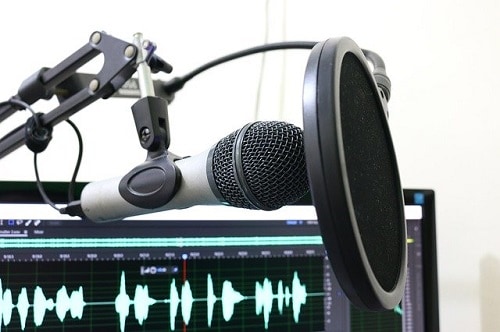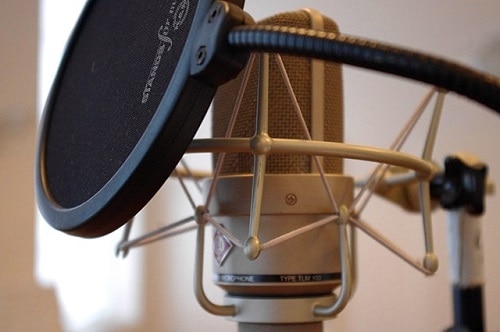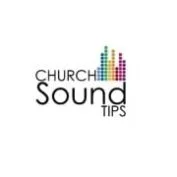A good dynamic microphone can be used for any kind of recording and performance. With the help of a properly set pop filter, you can make your recording sound professional.
However, preparing your equipment and setting it up for recording or live performance, for example, radio show, and making it sound great is not that easy as you think. Many speakers and singers have common “problems” with aggressive sibilants which are making hissing effect (s, sh, even ch) and/or plosives whether they are voiceless or voiced (t, k, p, d, g, b). In this case, a pop filter, or any type of windshield can be of great benefit to you and make your post editing process much easier.
What does a pop filter do?
Basically, it breaks the air produced by the singer and not let it suddenly burst into the microphone. With its cute design, the spread nylon (or other material) around the plastic or metal circle, typically mounted with the assistance of a gooseneck, it reminds us of a large lollipop in front of the mic. They usually come in two sizes 4 and 6 inches with metal or nylon mesh or screens. Placing it from 4 to 6 inches from your microphone should provide you the best results. It is quite useful for these mics, although they all have some kind of filter built-in, due to their “proximity effect” characteristic.
You will get that big, wide, deep vocal you are used to with dynamic mics, but without popping sounds in low, and hissing snakes in the higher frequency range. If you use a pop shield, it will cut out both, the high and the low-end frequencies before they get to the mic output and that will result in an easier job later when editing all of the undesired frequencies and sounds. You may wish to check out my more detailed post on what a pop filter actually does.
Also, another good side of using a pop filter is that it keeps moisture off the microphone which will help your mic stay in a good condition for a long time. Most are designed to attach to the arm of a mic stand, with a flexible gooseneck arm that can be moved in front or away from the front of the mic.

Will pop filters reduce background noise on a mic?
Perhaps the answer might be “yes”, but the final result of noise suppression is so minimal that it’s hard to notice. So, the simple answer is no. The pop shield will reduce only wind and heavy breaths. A pop-filter just breaks the air between the mic and itself and can’t protect you from background buzz and hum. So do not be hoping that it will reduce noise from your air conditioner, a slamming door, fan, hitting chair or desk and the like.
In this case, you should learn which polar pattern should be used if you are in a “loud” environment. A mic with a cardioid pickup pattern such as Shure SM57, Sm 58, Sennheiser E835, and similar types are really affordable and, in noisy situations will do a great job. Besides all this, you should keep your environment quiet as much as possible.
Of course, an adequate gain setup is a must. Enough gain to pick up what you saying/singing and not enough to pick up background noise from your room is all you need to make your recording noise free. Just stick to the rule, cut the root/source problem, and every additional process will be faster and easier. Pop shields are particularly useful when recording vocals, as the pop screen prevents those plosive sounds that have the potential to ruin vocals tracks.
These plosive sounds tend to be associated with words beginning with ‘p’, ‘b’, ‘f’, ‘th’ and ‘s’, where you are using a lot of breathy sounds that hit the mic diaphragm and can end up on your recording. You really don’t want to reduce noise in post-production with software, EQ, or combination if you can avoid it, because it can really deform your recording and affect the overall quality of it.

Does an SM58 require a pop filter?
The Shure SM 58 is a dynamic microphone, and all of those mics are naturally more resistant to pops and sibilance thanks to their high SPL (sound pressure level) characteristic. They are made to reject sounds from the side and they typically have some sort of integrated filter. But, many users claim that the built-in windshield on an SM58 actually won’t get the whole job done because it is a pretty minimalistic filter. An SM58 and its proximity effect characteristic will provide you with the best results if you record really close to the mic, but the real effect that comes by singing or speaking that close will be popping plosive sounds.
So, there is no right or wrong answer to this. My suggestion would be that you should use a shield for SM58 no matter what. In any case, it won’t harm your sound although some of the engineers claim that using nylon pop filters will cause you lack of high frequencies. At least, you will save your time editing Ps and Bs in your recording and will cut them out before the reach the output of your mic.
What about the Shure SM7B – does it need a pop shield?
Shure SM7B is a dynamic microphone with a cardioid polar pattern. It is podcaster’s favorite and, for sure, really great mic which will provide you with high quality, clear sound out of the box. It is equipped with Bass roll off and mid-range boost controls which will certainly make your plosives less noticeable. It’s not that cheap but once you decide to have a quality microphone, this one could be the right choice. SM7B dynamic mic comes with an already built-in foam windscreen and extra A7WS windscreen which means that Shure took care of its customers.
Without the foam (A7WS) it seems that the microphone captures much more frequencies at the high end than it should. So, we suggest you that you should use the windscreen that comes within the package. If you are thinking that foam is muffling your mic too much then try using a SM7b filter without foam. It really depends on your voice and technique of speaking/singing. So you should experiment. Try all of the possibilities, without any pop filter, with just one, with both…recording will look like you have few different mics.
FAQs
What type of filter should I use with a dynamic mic?
A windshield lollipop filter goes around the microphone’s head. It would be a never ending discussion about which one is better, which one is easier to use, which one is prettier, so I will only outline some of the facts and opinions of users as well as audio engineers. I assume you have heard that the foam is for outdoor or live use while the standard filter is for indoor or studio use only. It’s true, but just because it would be very weird to carry a big lollipop around with you. Yes, the lollipop filter looks so cool but only in the studio.
Basically, both are designed to do the same job, to protect the mic from strong air strikes from your mouth or the environment, and both will protect your microphone diaphragm from moisture. The only difference, and it is very important, is that you will notice the difference in the sound quality of your recording in these two products. The wind shield can cause a lack of medium and high frequencies in your sound much more than a pop shield. But of course, this depends on the quality of the product, the material (metal or nylon), and the density of the foam on the windscreen mic filter. There are some really nice high quality metal pop shields, but they do tend to be more expensive.
How do you maintain a mic windscreen?
After you have been using a pop filter for a while, you may find that it starts to get clogged with dirt or fluff. Therefore, you will need to clean your mic filter from time to time. Just make sure you don’t use any chemicals that might cause damage to your pop shield.

Leave a Reply